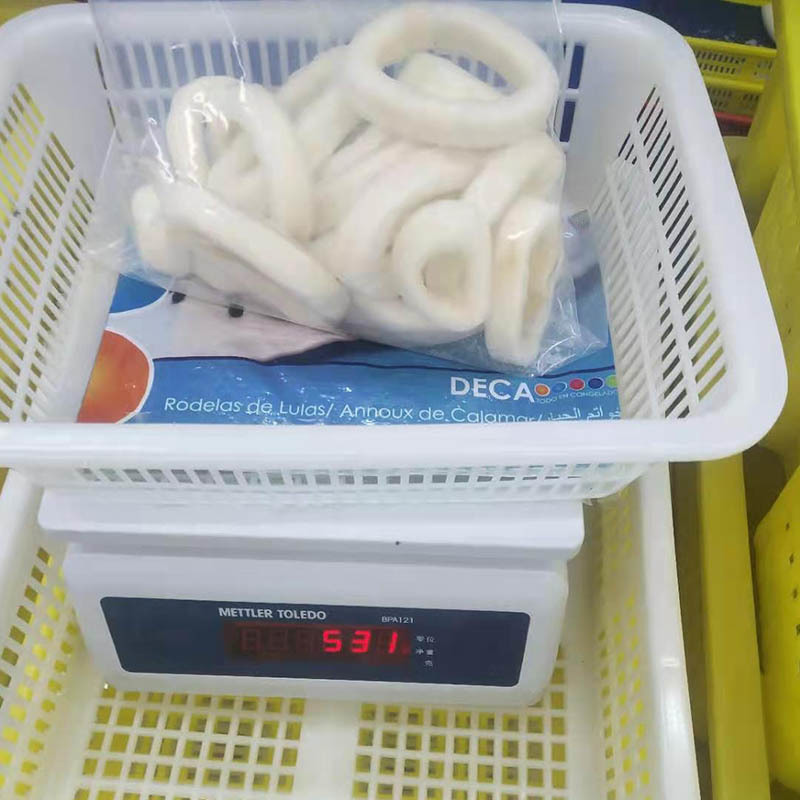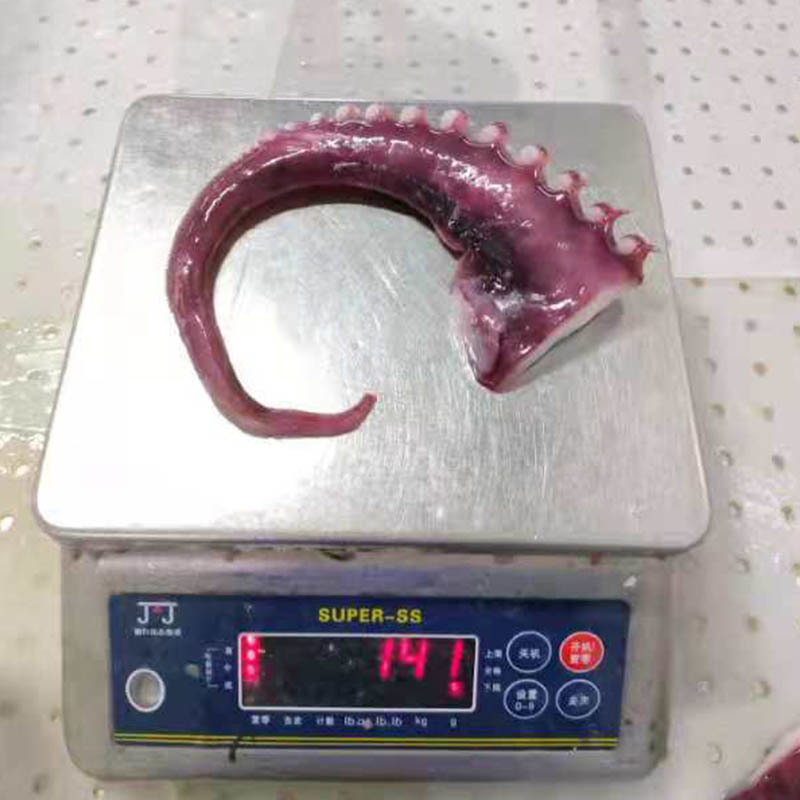The company's mission is to provide high-quality seafood to global buyers.
WhatsApp / WeChat : +8618659702877
From Ocean to Table: The Journey of 3-8cm Squid Rings - A Comprehensive Exploration
2025-08-07
From Ocean to Table: The Journey of 3-8cm Squid Rings
Table of Contents
The History of Squid Harvesting
Understanding Squid Species
Sustainable Harvesting Methods
The Processing of Squid Rings
Nutritional Benefits of Squid Rings
Culinary Uses of 3-8cm Squid Rings
Cooking Tips for Perfect Squid Rings
Frequently Asked Questions
The History of Squid Harvesting
The ha
From Ocean to Table: The Journey of 3-8cm Squid Rings
Table of Contents
- The History of Squid Harvesting
- Understanding Squid Species
- Sustainable Harvesting Methods
- The Processing of Squid Rings
- Nutritional Benefits of Squid Rings
- Culinary Uses of 3-8cm Squid Rings
- Cooking Tips for Perfect Squid Rings
- Frequently Asked Questions
The History of Squid Harvesting
The harvesting of squid has deep roots in various cultures, dating back thousands of years. Historically, squid was caught using simple techniques, such as hand lines and nets. As fishing technology evolved, so too did the methods for catching squid. Commercial fishing for squid became prominent in the mid-20th century, leading to various fishing vessels designed specifically for squid trawling.
Today, squid is one of the most harvested seafood products in the world, with populations found in every ocean. The global demand for squid has necessitated the development of more sophisticated techniques to ensure sustainability and quality. The journey of 3-8cm squid rings begins far below the ocean surface, where divers and fishermen work tirelessly to gather these delicious cephalopods.
Understanding Squid Species
Squid belong to the mollusk class Cephalopoda, which also includes octopuses and cuttlefish. The term "squid" encompasses various species, many of which are harvested for their meat. The most common species used for squid rings include the **Loligo vulgaris** (European squid) and **Dosidicus gigas** (Giant Pacific squid).
These species are particularly favored for their tender texture and mild flavor, making them ideal for a variety of culinary applications. Understanding the differences between these species is crucial for both consumers and producers, as it affects everything from taste to sustainability practices.
Sustainable Harvesting Methods
Sustainability in seafood harvesting has become an essential consideration for consumers and businesses alike. Overfishing can lead to population depletion and ecological imbalance. To combat this, many companies have adopted sustainable harvesting practices for squid.
These practices include using selective fishing gear that minimizes bycatch and employing seasonal restrictions to allow squid populations to regenerate. Certifications from organizations like the Marine Stewardship Council (MSC) ensure that the squid you enjoy comes from sources that adhere to sustainable practices.
Moreover, educational initiatives aimed at both consumers and fishermen help promote awareness of sustainable seafood. By choosing squid that has been responsibly harvested, you contribute to the health of our oceans while enjoying a delicious meal.
The Processing of Squid Rings
Once squid are caught, they undergo a meticulous processing journey from the ocean to your plate. The processing of squid rings typically includes several steps: cleaning, cutting, and freezing.
1. **Cleaning**: Fresh squid must be cleaned efficiently to maintain quality. This involves removing the head, internal organs, and skin.
2. **Cutting**: The cleaned squid is then sliced into rings, typically within the 3-8cm range. This size is preferred for its versatility in cooking and presentation.
3. **Freezing**: To preserve freshness, squid rings are often flash-frozen shortly after processing. This step is crucial for maintaining flavor and texture, ensuring that the squid remains as close to its fresh state as possible.
Quality control is vital during this process. Each batch is inspected to ensure it meets the industry standards for freshness, taste, and safety, allowing consumers to enjoy high-quality squid rings.
Nutritional Benefits of Squid Rings
Squid rings are not only delicious but also packed with nutritional benefits. As seafood, they are an excellent source of lean protein, providing essential amino acids necessary for muscle repair and growth.
In addition to protein, squid rings are rich in vitamins and minerals, including:
- **Vitamin B12**: Important for nerve function and the production of DNA and red blood cells.
- **Selenium**: An antioxidant that plays a critical role in metabolism and thyroid function.
- **Omega-3 Fatty Acids**: Beneficial for heart health and cognitive function.
Moreover, squid is naturally low in calories and saturated fats, making it an ideal choice for health-conscious individuals. Incorporating squid rings into your diet can enhance overall nutritional intake while satisfying your taste buds.
Culinary Uses of 3-8cm Squid Rings
The versatility of 3-8cm squid rings makes them a popular ingredient in various cuisines around the world. From appetizers to main courses, squid rings can be prepared in numerous ways, catering to diverse culinary preferences.
1. **Fried Squid Rings**: A classic preparation, often known as calamari, involves battering and frying squid rings until golden brown. This dish is commonly served with a side of marinara sauce or aioli.
2. **Grilled Squid Rings**: Marinating squid rings in herbs and spices before grilling brings out their natural flavors. This preparation is particularly popular in Mediterranean cuisine.
3. **Stir-Fried Squid Rings**: In Asian cooking, squid rings can be stir-fried with vegetables and sauces to create a flavorful dish that is both healthy and delicious.
4. **Salads and Pasta**: Incorporating squid rings into salads or pasta dishes adds a delightful texture and unique flavor, elevating the overall meal experience.
With such a wide array of cooking options, squid rings can easily be adapted to suit any taste, making them a cherished ingredient in many kitchens.
Cooking Tips for Perfect Squid Rings
To achieve the best results when cooking squid rings, consider the following tips:
1. **Do Not Overcook**: Squid cooks quickly. Overcooking can lead to a rubbery texture. Aim for 2-3 minutes of cooking time at high heat.
2. **Pre-Marinating**: Marinating squid rings before cooking can enhance their flavor. Use acidic ingredients like lemon juice or vinegar to tenderize.
3. **Use High Heat for Frying**: When frying, ensure the oil is hot enough (around 350°F) to create a crispy exterior without absorbing too much oil.
4. **Experiment with Spices**: Don't hesitate to experiment with various spices and herbs to create unique flavor profiles that suit your preferences.
By following these tips, you can prepare squid rings that are not only delicious but also visually appealing.
Frequently Asked Questions
1. Are squid rings healthy to eat?
Yes, squid rings are a healthy seafood choice, providing lean protein, vitamins, and minerals while being low in calories.
2. How do I store fresh squid rings?
Fresh squid rings should be stored in the refrigerator and consumed within 1-2 days. For longer storage, freeze them in an airtight container.
3. Can I eat squid rings if I have a shellfish allergy?
Individuals with shellfish allergies should consult a healthcare professional, as squid is classified as a cephalopod and not a shellfish.
4. What is the best way to cook squid rings?
Squid rings can be grilled, fried, or stir-fried. The key is to avoid overcooking them to maintain tenderness.
5. Where can I buy high-quality squid rings?
Look for squid rings at reputable seafood markets, grocery stores, or online retailers that specialize in fresh seafood.
Conclusion
The journey of 3-8cm squid rings from ocean to table encapsulates a remarkable tale of sustainability, nutrition, and culinary versatility. By understanding the history and processes involved in their production, consumers can appreciate the effort that goes into bringing this delightful seafood to their plates. From the methods of sustainable harvesting to the myriad of cooking possibilities, squid rings prove to be a delicious, healthy, and environmentally conscious choice for seafood lovers. Embrace the opportunity to explore this culinary gem and elevate your dining experience with the incredible flavors and textures of squid rings.
Size 3-8cm Squid Ring
RELEVANT INFORMATION
From Ocean to Table: The Journey of 3-8cm Squid Rings - A Comprehensive Exploration
From Ocean to Table: The Journey of 3-8cm Squid Rings
Table of Contents
The History of Squid Harvesting
Understanding Squid Species
Sustainable Harvesting Methods
The Processing of Squid Rings
Nutritional Benefits of Squid Rings
Culinary Uses of 3-8cm Squid Rings
Cooking Tips for Perfect Squid Rings
Frequently Asked Questions
The History of Squid Harvesting
The ha
2025-08-07
Discovering the Intricacies of Squid: A Dive into the News
Explore the multifaceted world of squid in recent news, culinary trends, and environmental insights.
2025-08-06
Exploring the Unique Qualities of Indian Ocean Squid: A Culinary Delight
The Indian Ocean Squid, a remarkable species found in the warm waters of the Indian Ocean, is increasingly recognized for its unique flavors and culinary versatility. As the demand for seafood continues to grow, understanding the characteristics and advantages of Indian Ocean Squid can provide valuable insights for industry professionals, chefs, and food enthusiasts alike.
One of the standout feat
2025-08-04







